
by Gideon Marcus
[Time is running out to get your Worldcon membership! Register here to be able to vote for the Hugos.]
The Balloon goes Up

It's been something of a dry patch for American space spectaculars, and with projects Gemini and Apollo both being delayed by technical and budgetary issues, it is no wonder that NASA is hungry for any positive news. So you can excuse them for trumpeting the launch of Explorer 19 so loudly — even if the thing is just a big balloon. How excited can anyone get about that?
As it turns out, plenty excited.
Explorer 19, launched December 19, 1963, is a spherical balloon painted with polka-dots (they keep the sun from making it too hot or cold), and what it does is measure the atmosphere as it circles the Earth. Not with any active instruments, but just by moving. All orbiting spacecraft have an ideal route, one determined by Newton's laws. If there were no air at all up there, the satellite would just keep orbiting in the same path forever (though the Moon and the Sun exert their own influences). But there is air up there. To be sure, the "air" up above 600 kilometers in altitude is hardly deserving of the name — it's a harder vacuum than we can make on the ground! Nevertheless, the stuff up there is denser than what is found in interplanetary space, and we can tell its density from the slow slip of Explorer 19 in its orbit.
If we want to know what kind of science we'll get from Explorer 19, all we have to do is look to Explorer 9. Launched two years ago, it is a virtual twin. Both Explorers were launched from cheap, solid-fuel Scout rockets. Both have tracking beacons that failed shortly after launch. The only way to get any data from these missions is to track the satellites by sophisticated cameras.

Explorer 9 has already contributed immensely to our knowledge of Earth's upper atmosphere. Thanks to constant photographic tracking of the satellite, scientists have seen the expansion of the atmosphere as it heats up during the day as well as shorter term heating from magnetic storms in the ionosphere. As a result, we are getting a good idea of the "climate" on the other side of the atmosphere over a wide range of latitudes.
This is not only useful as basic science; the folks who launch satellites now have a better idea how long their craft will last and the best orbits to shoot them into, saving money in the long run. It is one of the many examples of how the exploration of space bears immediate fruit and also extended benefits.
And that's something to be excited about!
The other shoe drops
On the other hand, the January 1964 Fantasy and Science Fiction begins the year on the wrong foot. It is yet another collection of substandard and overly affected tales (leavened by a few decent pieces that somehow manage to get through), something like what Analog has become, though to be fair, I'm really looking forward to Analog this month.
But first…
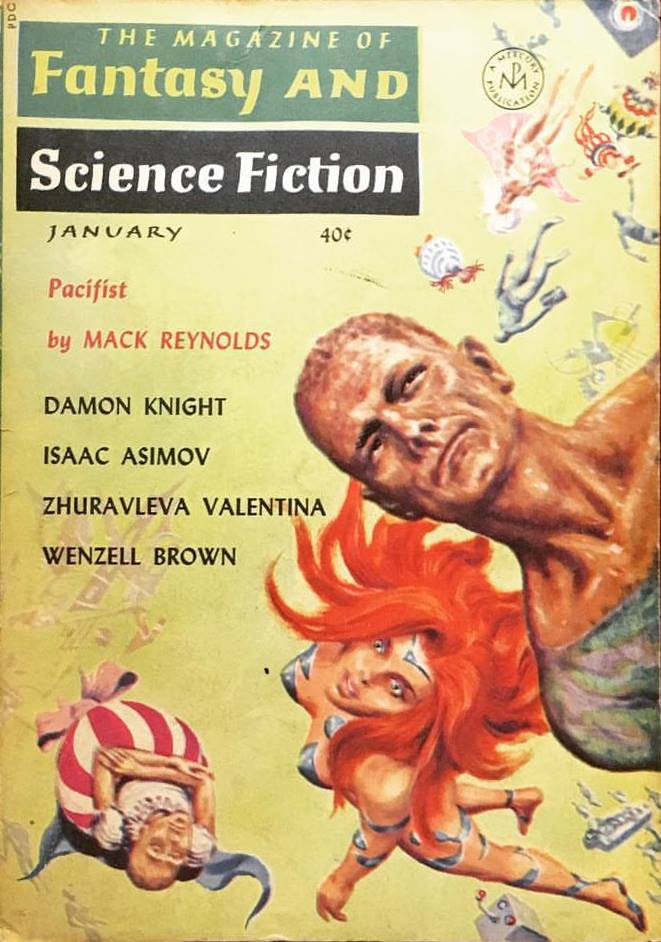
Pacifist, by Mack Reynolds
The best piece of the month is Pacifist by the prolific, seasoned, and (on occasion) excellent Mack Reynolds. On a world much like ours, but where the balance of power is held between the north and south hemispheres, an anti-war group determines that the only way to curb our species' bellicose tendencies is to frighten the war-wagers with violence. But can you really quench fire with fire?
It works because of the writing, something Reynolds never has trouble with. Four stars.
Starlight Rhapsody, by Zhuravleva Valentina
This curious piece, in which a young woman astronomer discerns intelligent signals being broadcast from the nearby star, Procyon, originated in the Soviet Union. It was then translated into Esperanto, of all languages, and then found its way into English. The result is…well, I'll let our Russian correspondent give us her thoughts:

by Margarita Mospanova
In Russian, Starlight Rhapsody is actually a very pretty story — melodic and full of poetry, literally and metaphorically. It’s fairly melancholy, with just a touch of underlying Soviet optimism, nothing too garish in this case. But the translation…
Man, the translation makes me want to tear my hair out. It’s awful. It misses entire paragraphs of text as well as actual poems in the beginning and in the end. And the prose itself in no way resembles the original. Hell, it’s as if the translator used some kind of computerized translation device and just removed the grammatical mistakes afterwards. I’m really disappointed because the original story is really unexpectedly good.

by Gideon Marcus
You can get a glimmer of the story's original strength even from the twice-butchered version that editor Davidson provides. Thus, three dispirited stars.
The Follower, by Wenzell Brown
Witness the perfect match: A milquetoast who decides to make his mark on society by stalking someone, and a paranoiac who only finds satisfaction when someone really is after him. But their game develops a twist when their twin psychoses create a third player combining the worst aspects of both.
Sounds intriguing, doesn't it? If it were better done or more profound in its revelation, it might have been. As is, it straddles the line between two and three stars, leaning toward the former.
The Tree of Time (Part 2 of 2), by Damon Knight
The conclusion of last month's adventure, in which a not-quite-man from the future is abducted from our time by frog people from his and then left to die in an experimental dimension ship.
After a reasonably thrilling beginning, the book reverts to what it was from the start — a pointless pastiche of the worst elements of science fiction's "Golden Age." Deliberate or not, it's no less unreadable for it.
One star. Feh.
Thaw and Serve, by Allen Kim Lang
Lang explores an interesting idea: hardened criminals are quick-frozen and deposited two centuries into the future. It is the ultimate passing of the buck. Turns out the future doesn't know what to do with them either, choosing to dump them in the wilds of Australia. There, they fight it out for the televised amusement of the future-dwellers.
Written and plotted with a heavy hand, it's not one of Lang's better works. In fact, the best thing about the story is the biographical preamble (Lang's middle name was given to him by Koreans during the war).
Two stars.
Nackles, by Curt Clark
"Curt Clark" (I have it on good authority that it's actually Donald Westlake) offers up the chilling story of the creation of a deity. In this case, it's Santa Claus' dark shadow, the child-abducting "Nackles," who is caused to exist the same way as any other god — through widespread promulgation of belief.
Deeply unpleasant, but quite effective. Three stars (four if this is your kind of thing).
Round and Round and …, by Isaac Asimov
At long last, I finally understand the concept of the "sidereal day," as well as the length of such days on other planets. Thank you, Doctor A! Four stars.
The Book of Elijah, by Edward Wellen
If you haven't read First and Second Kings (or as the uninitiated might call them, "One and Two Kings"), Elijah was a biblical prophet, passionate in his service of the Lord, who ascended to Heaven in flame and is due to return just before the End Times. Ed Wellen, best known for his "funny" non-fact articles in Galaxy, writes about what happens to Elijah during his sojourn off Earth.
The Book is written in pseudo-King James style and is about as fun as reading the Bible, without any of the spiritual edification. One star.
Appointment at Ten O'Clock, by Robert Lory
Last up, we have the tale of man with just ten minutes to live…over and over and over again. Ten O'Clock has the beginning of an interesting concept and some deft writing, but it is short-circuited in execution. It reads like the effort of a promising but neophyte author (which, in fact, it is — this is his second work). Three stars.
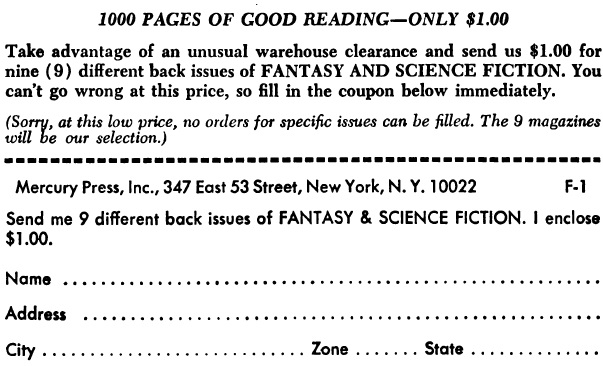
This is what the once proud F&SF has been reduced to: a lousy Knight serial (shame, Damon!), a disappointing translation, some bad little pieces, and a couple of bright spots. And Asimov's column, which I read, even if few others seem to.
Oh well. I've already paid for the year. Might as well see it through.


![[December 21, 1963] Soaring and Plummeting (January 1964 <i>Fantasy and Science Fiction</i>)](https://galacticjourney.org/wp-content/uploads/2018/12/631221cover-661x372.jpg)

![[December 11, 1963] Count every star (1963's Galactic Stars)](https://galacticjourney.org/wp-content/uploads/2018/12/631211stars-527x372.jpg)

















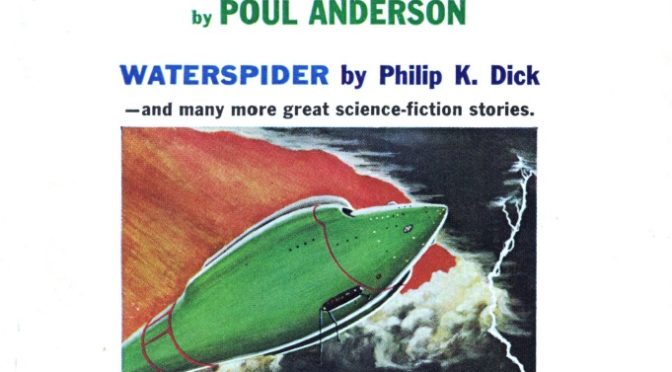









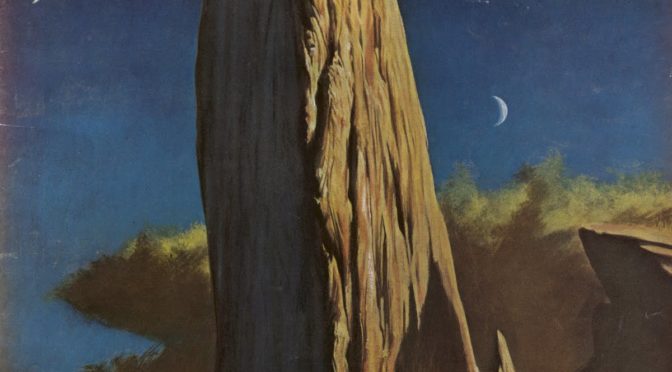







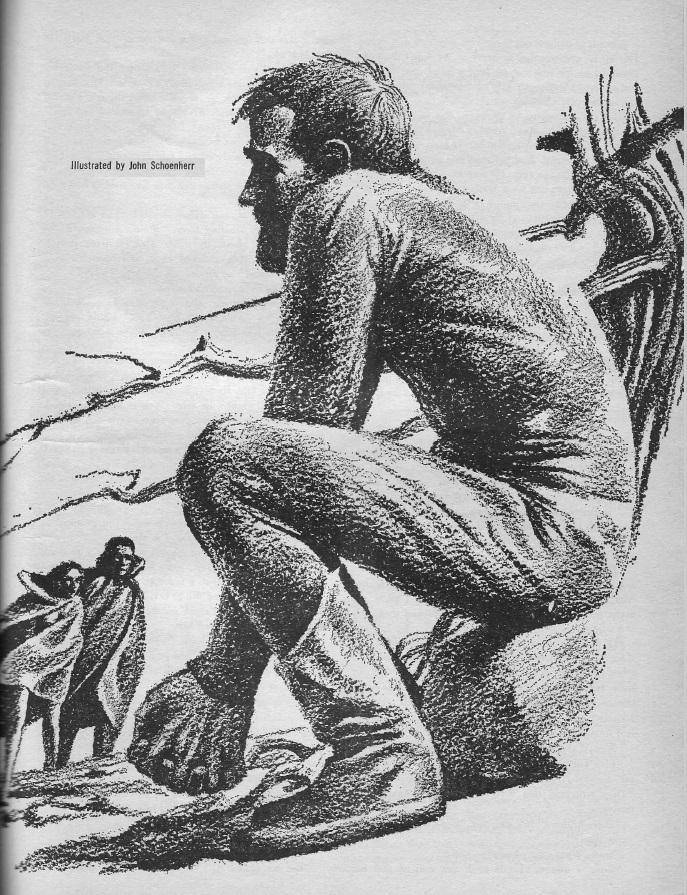


![[November 22, 1963] President Kennedy has been assassinated](https://galacticjourney.org/wp-content/uploads/2018/11/631122a1030-672x372.jpg)



![[November 19, 1963] Fuel for the Fire (December 1963 <i>Fantasy and Science Fiction</i>)](https://galacticjourney.org/wp-content/uploads/2018/11/631119cover-667x372.jpg)



![[November 17, 1963] Galactoscope (Three Ace Doubles!)](https://galacticjourney.org/wp-content/uploads/2018/11/631117f187-672x372.jpg)
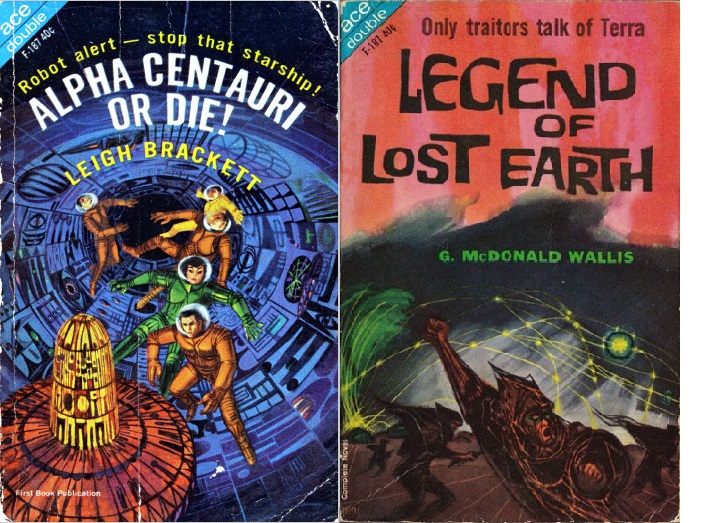

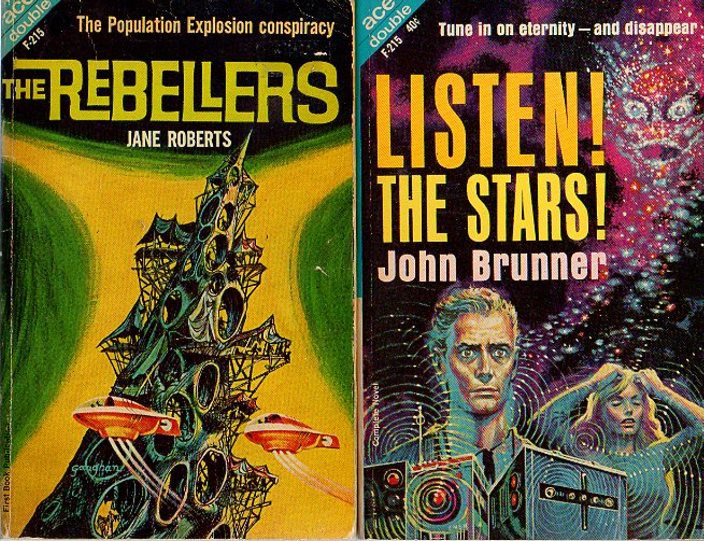

![[November 9, 1963] Change and Constancy (December 1963 <i>Galaxy</i>)](https://galacticjourney.org/wp-content/uploads/2018/11/blog631109cover-400x372.jpg)








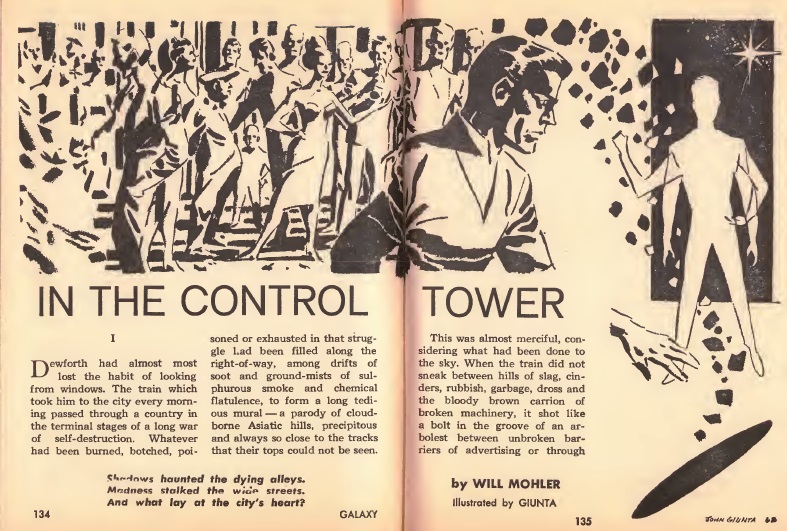


![[November 5, 1963] Beginning to see the light (November 1963 <i>Gamma</i>)](https://galacticjourney.org/wp-content/uploads/2018/11/631105cover-660x372.jpg)









![[November 1, 1963] Bitter taste (November 1963 <i>Analog</i>)](https://galacticjourney.org/wp-content/uploads/2018/11/631101cover-451x372.jpg)







